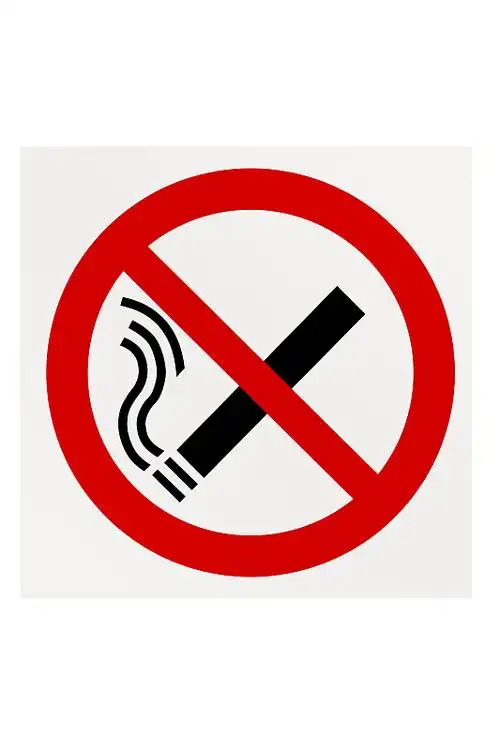The Unseen Link: How Smoking Fuels Periodontal Abscesses and Drives Antibiotic Dependency

There's a familiar, often unspoken ritual for many long-term smokers. The morning cough, the slight yellowing of the fingers, and a subtle, persistent awareness of one's own breath. While the distant threats of lung cancer and heart disease loom in the background, a more immediate and painful battle is often being waged right inside the mouth. For countless individuals, this battle manifests as a periodontal abscess—a tender, swollen, and pus-filled sac along the gum line that signals a serious infection. What many don't realize, and what a growing body of dental research confirms, is that smoking is not just a bad habit; it is a primary driver behind the development of these abscesses and the subsequent, often necessary, reliance on antibiotic treatments.
To understand this chain reaction, we must first look at the oral environment smoking creates. A healthy mouth is a balanced ecosystem. Gums fit snugly around teeth, forming a protective seal. Beneath this gum line, a complex community of bacteria, both good and bad, coexists in a delicate equilibrium. The primary cause of periodontal disease, which includes abscesses, is the accumulation of bacterial plaque. However, smoking aggressively tips this balance toward disease.
Cigarette smoke, with its thousands of toxic chemicals, acts as a double-edged sword against oral health. Firstly, it drastically reduces blood flow to the gums. Nicotine is a potent vasoconstrictor, meaning it causes the tiny blood vessels in the gum tissue to narrow. This diminished blood supply starves the gums of oxygen and essential nutrients, weakening their structural integrity and crippling their natural immune response. Imagine the gum tissue as a well-defended fortress. Smoking effectively cuts off its supply lines and weakens the walls, making it vulnerable to attack.
Secondly, smoking creates a more hospitable environment for the very bacteria that cause periodontal abscesses. Research has shown that the composition of plaque in a smoker's mouth is different and more pathogenic. Harmful, anaerobic bacteria (bacteria that thrive without oxygen) like Porphyromonas gingivalis and Treponema denticola find the low-oxygen, nutrient-rich pockets around a smoker's gums to be the perfect breeding ground. This is a critical point in the smoking and periodontal abscess connection. The smoker’s mouth is not just dirty; it's biologically altered to favor disease-causing microbes.
This sets the stage for the main event: the periodontal abscess. An abscess forms when these aggressive bacteria invade deeper into the periodontal pocket—the space between the tooth and gum. As the body’s immune system tries to fight back, pus forms, leading to swelling, throbbing pain, and the characteristic feeling of a tooth being "elevated." The reduced blood flow from smoking means the body's defensive cells struggle to reach the site of infection, allowing the bacteria to multiply rapidly and with less resistance. Consequently, smokers are not only more likely to develop these abscesses, but they also tend to develop them more frequently and with greater severity than non-smokers.
This is where the critical issue of antibiotic use enters the picture. The standard, first-line treatment for a periodontal abscess is a clinical procedure. A dentist will perform what is known as incision and drainage (I&D), where a small cut is made in the abscess to release the pus, immediately relieving pressure and pain. This mechanical debridement, often accompanied by a deep cleaning of the affected pocket, is the most effective way to resolve the infection. Antibiotics are not always required if this drainage is successful and the patient's immune system is robust.
However, for smokers, this equation changes dramatically. Due to the compromised local immunity in their gum tissues, the infection is more likely to be severe and widespread. The dentist, upon examination, often sees signs that the infection is not localized. There might be significant swelling in the face or jaw (cellulitis), a fever, or general malaise—all indicators that the bacterial invasion has overwhelmed the body's local defenses and is entering the bloodstream. In such cases, the risk of serious complications like a spreading dental infection or even sepsis becomes real.
This is the pivotal moment where the main cause of antibiotic use for periodontal abscess in smokers becomes clear. The antibiotic prescription is a direct response to the systemic risk created by the smoking-compromised immune system. The drugs are not a substitute for the drainage procedure but an essential adjunct therapy to control the bacterial spread throughout the body. Common antibiotics prescribed include Amoxicillin, Metronidazole, or a combination, aimed at knocking out the specific anaerobic bacteria that smoking has allowed to flourish.
Therefore, the link between smoking and antibiotic need for gum infection is not coincidental; it's causal. A non-smoker with a similar abscess might only require the I&D procedure. A smoker, with their impaired healing and immune response, often necessitates the full protocol: procedure plus pills. This contributes directly to the global challenge of managing dental infections in smokers with antibiotics, a scenario that fuels the alarming rise of antibiotic resistance. Every unnecessary or "just-in-case" course of antibiotics gives bacteria another opportunity to learn, adapt, and become resistant to our best medicines. Smokers, by the very nature of their oral ecology, are disproportionately contributing to this cycle.
The problems for the smoking patient don't end with finishing the antibiotic course. The impact of smoking on periodontal abscess treatment outcomes is profoundly negative. Healing is slower, pain may persist longer, and the risk of the abscess recurring in the same or a new location is significantly higher. The root cause—the smoking-altered oral environment—remains unchanged. This is why many dental professionals view treating a periodontal abscess in a smoker as a temporary fix if the smoking habit continues. It's like bailing water out of a leaky boat without plugging the hole.
So, what is the solution? The most powerful intervention is clear. Smoking cessation for preventing periodontal abscesses is the single most effective strategy. The good news is that the human body is remarkably resilient. Once smoking stops, blood circulation begins to improve within weeks. The gum tissue starts to receive the oxygen and nutrients it needs to repair itself and mount a proper defense. The bacterial population in the mouth slowly shifts back towards a less pathogenic balance. The risk of developing new abscesses plummets, and the body's response to any necessary future dental treatment improves immensely.
For any smoker who has experienced the throbbing pain of a gum abscess and the subsequent cycle of dental visits and antibiotics, this should be a powerful motivator. Quitting smoking is not just about avoiding far-off diseases; it's about preventing immediate, painful infections and breaking the dependency on antibiotic treatments. It’s about restoring the natural balance in your mouth and allowing your body's own incredible healing abilities to function as they were designed to.
If you smoke and are concerned about your oral health, the best step is to have an open conversation with your dentist and physician. They can provide resources, support, and a clear path forward for smoking cessation. Tackling the habit is the definitive way to address the primary cause of antibiotic use for periodontal abscess, ensuring a healthier mouth and a stronger, more resilient you.










